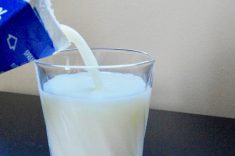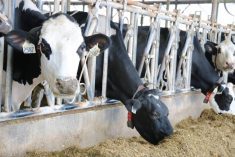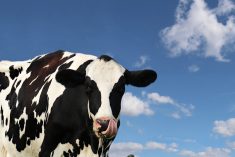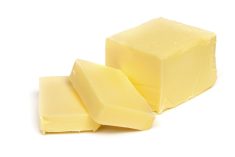Glacier FarmMedia — I’ve noticed that most dairy lactation diets now contain a fortified level of chelated trace minerals.
When I ask dairy producers why they feed those instead of conventional trace minerals, they often say they don’t know or that their nutritionist thinks it is a good idea.
There is nothing technically wrong with feeding chelated trace minerals to lactating dairy cows, but I also believe that feeding them in such a broad way is costly and likely not necessary. I recommend their use only in specific situations.
Read Also

Why agriculture is Canada’s energy ace
Why isn’t agriculture getting more play in Canada’s quest for efficient, renewable energy production? It should be
Chelation is a type of biological bonding of specific molecules to metal ions. The former is usually an organic molecule such as an amino acid bound to the latter, but not necessarily. This results in a chelation effect, which yields greater bioavailability, superior absorption, retention and general metabolizable properties to the resident metal in dairy nutrition as compared to inorganic “rock” trace minerals.
Chelated examples include positive-charged trace mineral bound to an amino acid — zinc methionine, copper lysine and manganese methionine. It should be noted that a negatively charged trace mineral such as selenium cannot be truly chelated. Rather, organic selenium is produced by feeding inorganic selenium to yeast, which incorporates it into its body proteins.
Before I decide to put chelated trace minerals into a lactation dairy diet, I often ask what trace minerals will be required in the first place and at what dietary levels.
For example, the National Research Council recommends that the copper requirement to support functions in dairy cattle is 10 mg/kg of diet on a dry matter basis. A dry matter intake of 25 kg (dry matter basis) means we need to supply about 250 mg per head per day.
Research also dictates that feeding higher amounts of copper (as well as essential zinc, manganese and selenium) do not produce a beneficial response as widely believed. In fact, the opposite may be true. Isolated dairy cases of copper toxicity have been reported at dietary levels as little as 400 mg per head per day.
Consequently, I implement inorganic “rock” trace minerals in my own lactation feeding programs for dairy producers, largely based on NRC recommendations. That’s because inorganic copper sulphate, zinc oxide, manganese sulphate and sodium selenite have a suitably high degree of digestive, absorption and retention rates.
These trace mineral rock sources can fail when certain situations arise that significantly reduce their bioavailability properties to the point where dairy animals cannot meet nutrient requirements. In these situations, I switch to comparable chelated trace minerals.
- Antagonistic minerals in forages: High molybdenum in forages binds inorganic copper sources when both are ingested by the average dairy cow. Molybdenum is classic when it combines with this copper sulphate in the rumen and the rest of the digestive tract to form insoluble complexes, which are easily excreted. Since chelated copper-lysine cannot be bound by molybdenum, its natural metabolism to meet the lactating cows’ copper requirement is uninterrupted.
- Build trace mineral status: This is important in the workings of immune function and reproduction, especially ovulation. Deficient levels of copper, manganese, zinc and selenium are known to cause anestrus in fertile cattle. Ohio State University animal scientists reported that cystic ovaries were diagnosed in 19 per cent of a split group of dairy cows injected with organic selenium compared to a 47 per cent incidence of cystic ovaries in untreated cows.
- Strengthening hoofs: Zinc-methionine strengthens cattle hoofs. About 10 years ago, I balanced the dry cow and lactation diets for a 100-cow dairy herd. The herd had a high incidence of foot-rot and white-line sole separation. I suggested that we feed zinc-methionine (a specific chelated-zinc) at four grams per head daily. After six-months, most of these hoof issues were gone. The hoof-trimmer said the herd’s hoof-horn became much harder during trimmings. No other significant changes were implemented in the diet during this time.
These are three personal testimonials that demonstrate the strategic use of chelated trace minerals in lactation dairy diets. Whether dairy producers use them in such defined ways or in mainstream dairy nutrition is really a matter of choice. In both cases, they should satisfy lactating dairy cow trace mineral requirements.















